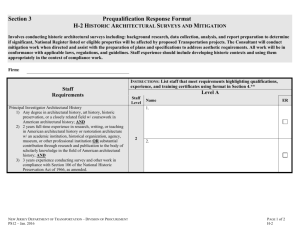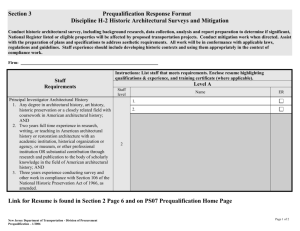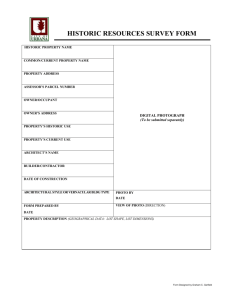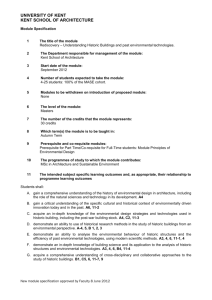15A NCAC 07H .0510 SIGNIFICANT COASTAL HISTORIC
advertisement
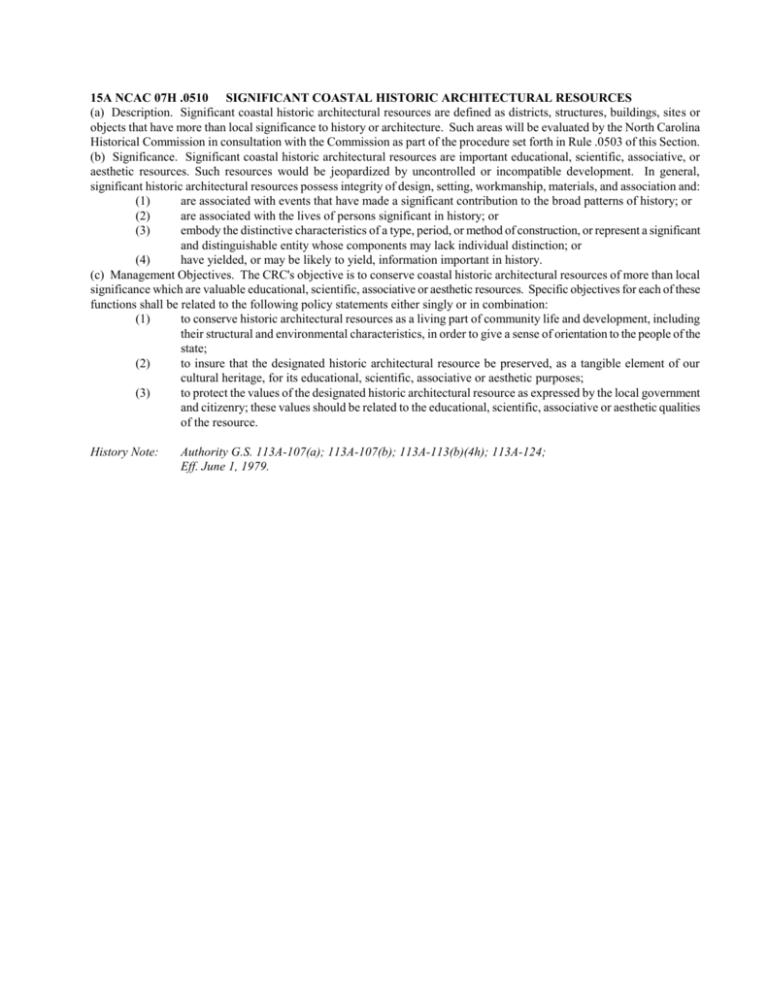
15A NCAC 07H .0510 SIGNIFICANT COASTAL HISTORIC ARCHITECTURAL RESOURCES (a) Description. Significant coastal historic architectural resources are defined as districts, structures, buildings, sites or objects that have more than local significance to history or architecture. Such areas will be evaluated by the North Carolina Historical Commission in consultation with the Commission as part of the procedure set forth in Rule .0503 of this Section. (b) Significance. Significant coastal historic architectural resources are important educational, scientific, associative, or aesthetic resources. Such resources would be jeopardized by uncontrolled or incompatible development. In general, significant historic architectural resources possess integrity of design, setting, workmanship, materials, and association and: (1) are associated with events that have made a significant contribution to the broad patterns of history; or (2) are associated with the lives of persons significant in history; or (3) embody the distinctive characteristics of a type, period, or method of construction, or represent a significant and distinguishable entity whose components may lack individual distinction; or (4) have yielded, or may be likely to yield, information important in history. (c) Management Objectives. The CRC's objective is to conserve coastal historic architectural resources of more than local significance which are valuable educational, scientific, associative or aesthetic resources. Specific objectives for each of these functions shall be related to the following policy statements either singly or in combination: (1) to conserve historic architectural resources as a living part of community life and development, including their structural and environmental characteristics, in order to give a sense of orientation to the people of the state; (2) to insure that the designated historic architectural resource be preserved, as a tangible element of our cultural heritage, for its educational, scientific, associative or aesthetic purposes; (3) to protect the values of the designated historic architectural resource as expressed by the local government and citizenry; these values should be related to the educational, scientific, associative or aesthetic qualities of the resource. History Note: Authority G.S. 113A-107(a); 113A-107(b); 113A-113(b)(4h); 113A-124; Eff. June 1, 1979.


